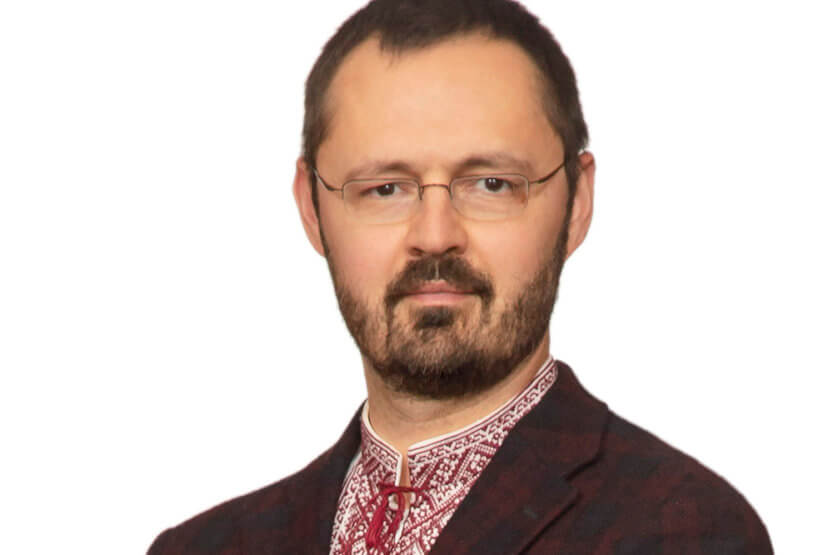In Class: Slavic Speaker
 Language Program Coordinator, Senior Lecturer Roman Ivashkiv
Language Program Coordinator, Senior Lecturer Roman Ivashkiv Like most Ukrainians, I am bilingual. I teach both Ukrainian and Russian. Slavic languages are probably not as difficult to learn as languages like Chinese and Arabic, but they are still difficult. The major struggle during the first couple weeks of class is to help students figure out how to navigate the alphabet. Some letters in the Cyrillic alphabet are similar to the English alphabet. Some are very, very different.
We use geographical names and proper names to help students retrain their brains, to look at an unfamiliar symbol and recognize sounds that they already know. For example, the word “America” in Ukrainian is pronounced “Ah-meh-rih-kah.” The Cyrillic letter for “R” in that word looks like the English “P.” Students struggle with this, but they also have a lot of fun.
I also teach applied literary translation. I give students an opportunity to explore literary translation and try it firsthand. I have students from China, Saudi Arabia. I also have students who speak French, German, Spanish, Portuguese, Ukrainian, Russian, Polish and Korean. I sometimes joke that “This is the U.N.”
More and more works from Ukrainian literature are being translated into English. One is an anthology of poetry titled, Words for War, which is dedicated to Russia’s first Ukrainian invasion, which occurred in 2014 when Russia illegally annexed the Crimean Peninsula and invaded Donbass in eastern Ukraine.
Right now, I am teaching a class on Ukrainian culture. We look at Ukrainian music, food, customs, sports, architecture. We watch Ukrainian films. We explore Ukrainian crafts. We learn about famous Ukrainians. But we start with Ukrainian history. One of the most important topics is the Holodomor, also known as the Ukrainian Holocaust, a tragedy that occurred from 1932 to 1933 when Soviet dictator Joseph Stalin orchestrated a famine, starving 4 million Ukrainians to death. This is something that the international community knows very little about.
The course has changed dramatically since the beginning of the semester. I’m seeing my country being destroyed on TV and it’s heart-wrenching. My family is still there. I start every class with an update, including developments on the battlefield. I rely heavily on Twitter and other social media platforms to provide videos and pictures, most of which are graphic.
Ukraine is the biggest country in Europe, and Ukrainians can easily compare what life is like in Poland to what it is like in Russia—not just the comforts of lifestyle, but political freedom. When Ukrainians decided that they wanted to be like the people in Poland, the Russian government got mad. Russian President Putin has always been unhappy about the collapse of the Soviet Union.
Many people who haven’t heard a lot about Ukraine in the past are being supportive, which is comforting to me. They sympathize and they try to help as much as they can. I think most Ukrainians, like myself, really appreciate that.
Edited and condensed from an interview on March 30, 2022


